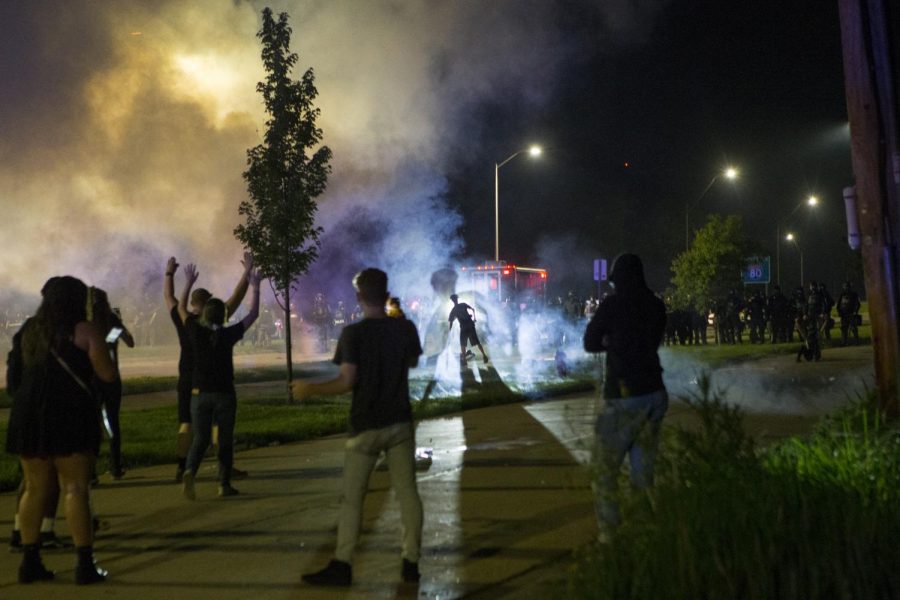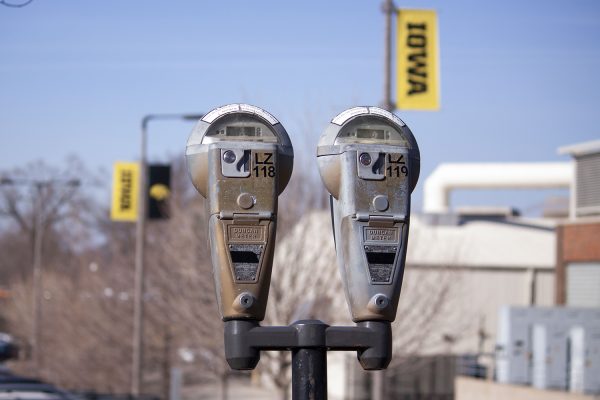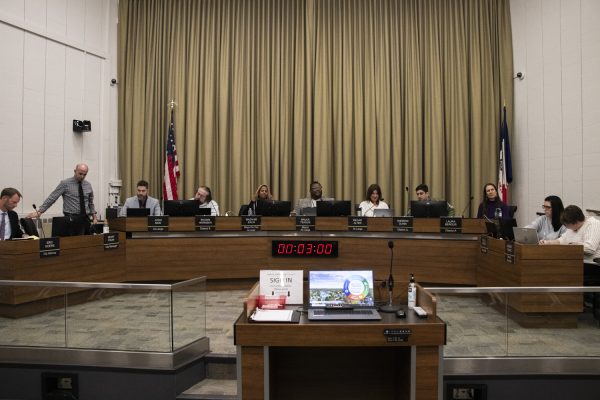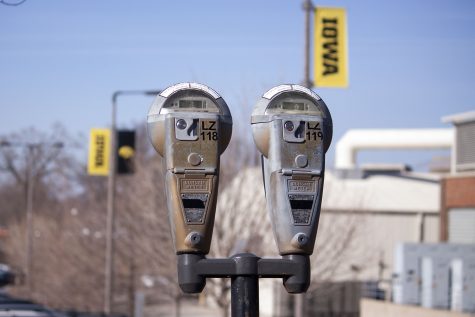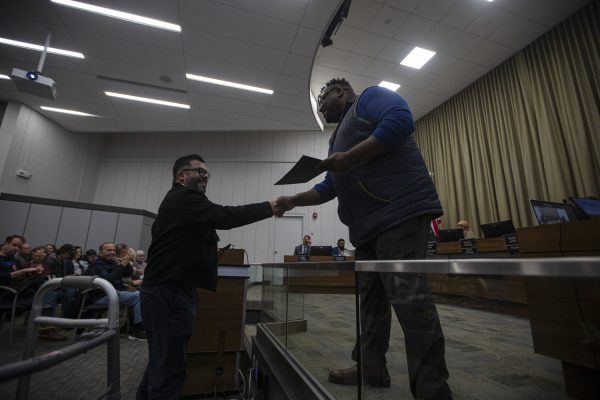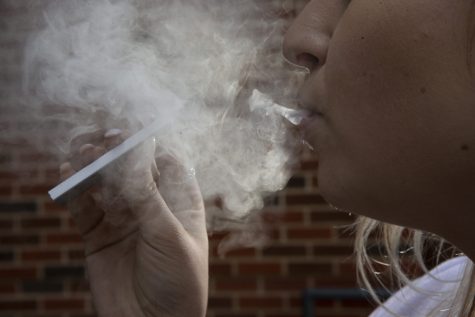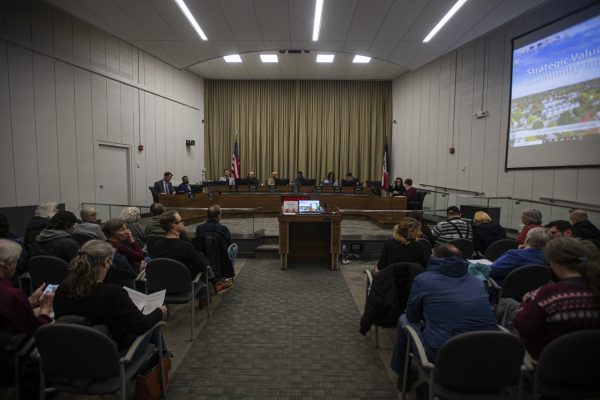Iowa City releases report over police use of tear gas, flashbangs against protesters
The report recommended that ICPD improve communication tactics, enhance community outreach, and clarify policies around use of force and crowd control.
A protestor puts their bicycle on the ground before sitting down in front of police officers. Officers fired tear gas on the crowd after protestors disobeyed an order not to advance. Several protestors reported that none of the protestors made physical contact with officers before being tear gassed unexpectedly. This protestor sat on the ground amid a cloud of tear gas for several minutes.
January 29, 2021
An independent firm completed a review of the June 3 protest in Iowa City, providing 39 recommendations to the Iowa City Police Department, including reviewing agreements with other law enforcement agencies, increasing officer training, and improving communication between law enforcement, protest leaders, and the public.
On June 3, 2020, Iowa City police, along with the Iowa State Patrol and other area agencies, used tear gas and flash-bangs on peaceful protesters who were marching toward I-80. The incident prompted Mayor Bruce Teague to say the tactics would not be used again, and eventually led to the council contracting with OIR Group, a California firm specialized in police oversight, for an investigation.
Iowa City City Council approved the review in September with a budget of up to $50,000, paying the firm hourly.
The report, released on Jan. 28, lists events in the buildup to June 3, a timeline of the June 3 protest, and recommendations moving forward for Iowa City police.
The firm conducted interviews with several Iowa City police members and reviewed documents, body camera footage, and department policy related to the tear gas incident and surrounding events.
The firm interviewed two protesters during the review, reaching out to five people who had filed formal complaints with the city’s Community Police Review Board, with three not responding.
The Iowa State Patrol, which was in command during the standoff near I-80, declined to offer any documents or interviews to the firm.
“The chance to gain that agency’s perspective would obviously have helped fill relevant gaps in the understanding of influential decision-making that occurred at that time and the lack of any substantive responsiveness to requests for information from ISP is disheartening,” the report said.
Other agencies involved, the Johnson County Sheriff’s Office and the University of Iowa Police Department, offered written email responses to the firm.
Of the 39 recommendations, several focused on reviewing agreements with other law enforcement agencies, better negotiation with protesters, preventing crowds from being in close proximity with police, implementing better training practices for police, and improving communication with protesters and the public.
The report recommended the city “develop or refine as needed any written protocols that set out limitations on deployment of munitions or enforcement activity with which the police apartment will not assist.”
The report also recommended police be more proactive in reaching out to protest leaders, and for the department to develop a crowd control strategy based on deescalation.
Other recommendations include codifying the department’s approach to less lethal munitions, that the police department post a searchable version of its policy manual online, and provide formal crowd control training to officers.
Though the report says officers issued verbal warnings to the crowd to disperse, OIR Group said the audibility of the warnings was questionable and wasn’t able to determine how many protesters heard the warnings.
The report says the Iowa City police had significant gaps in its crowd control rules: the policies lack guidelines on use of force in crowd control and language and methods for dispersal orders. The report recommends that the department create better, formal guidelines for dealing with mass protest and crowd control.
The OIR Group wrote in the report that the Iowa State patrol lacked resources, specifically crowd control methods, which is why the agency enlisted help from the Iowa City Police Department and the UI Police Department.
“Our hope, for ICPD and the City, is that the painful chapters of 2020 will be understood in the future as a turning point that redounds to the benefit of all concerned,” the report says. “We offer this report as an element in that ongoing process, appreciate the opportunity to be part of it, and intend to track future developments with optimism.”



